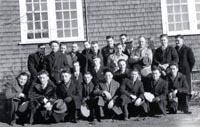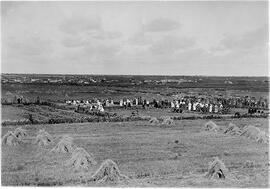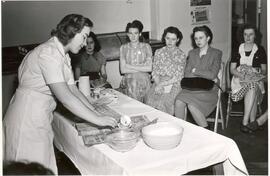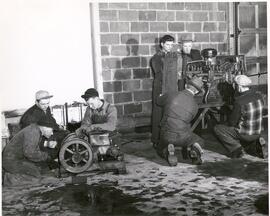Dominion-Provincial Youth Training Program - Group Photo
- A-3885
- Item
- 1940
DPYT participants dressed in winter coats kneeling and standing in front of a building; llocation unknown.
Bio/Historical Note: The Dominion-Provincial Youth Training Program (DPYT) was a federal government measure created in 1937 that provided training and apprenticeship courses for young men and women between the ages of 16 and 30. $1 million in Dominion funds was given to the provinces in an effort to keep youth off public relief, prepare young people to eventually secure employment, and reduce pressure on the labour market. Courses for women were initially kept separate and distinct. Beginning in April 1940 the Youth Training Program was expanded, streamlined, and redirected towards the industrial training of young people for war work and eventually evolved into the War Emergency Training Program (1940-1946). Nearly $24 million was spent under this program and more than 300,000 persons received training. After World War II, six-week, residential, coeducational DPYT courses were conducted for eight years at Kenosee, North Battleford and Prince Albert; for two years at Canora, and for one year at Yorkton. The name of the DPYT was later changed to the Canadian Vocational Training Program (CVT). The program was terminated in the late 1950s.






